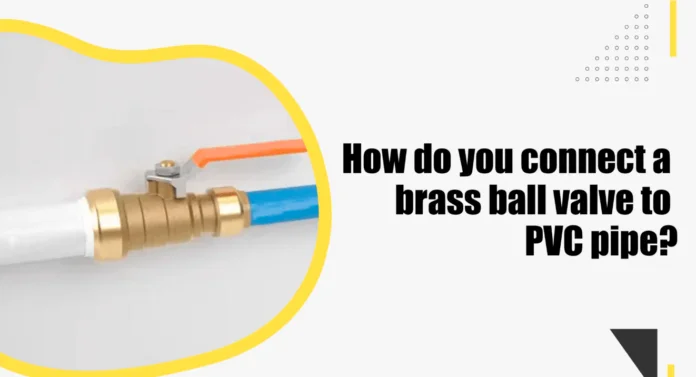When it comes to plumbing projects, knowing how to connect different types of pipes is essential. Connecting a brass ball valve to PVC pipe is a common task that many DIY enthusiasts and professionals encounter. Brass ball valves are durable and suitable for various applications, while PVC pipes are known for their affordability and versatility. In this guide, we will walk you through the step-by-step process of connecting a brass ball valve to PVC pipe, ensuring a secure and leak-free joint.
Understanding Brass Ball Valves and PVC Pipes
Brass ball valves are commonly used in plumbing systems to control the flow of water or other fluids. They have a ball with a hole through the center that rotates to allow or block the flow. On the other hand, PVC pipes are made of polyvinyl chloride and are widely used in residential and commercial plumbing due to their lightweight and corrosion-resistant properties.
Safety Precautions
Always prioritize safety during any plumbing project. Wear appropriate protective gear such as gloves and safety goggles to avoid injuries. Ensure proper ventilation when using PVC cement to prevent inhaling harmful fumes.
Step 1: Cut the PVC Pipe
Measure and mark the PVC pipe at the desired length where you want to install the brass ball valve. Use a pipe cutter or hacksaw to make a clean and straight cut through the pipe.
Step 2: Prepare the Brass Ball Valve
Inspect the brass ball valve for any debris or manufacturing residue. Clean the valve thoroughly with a rag or cloth to ensure a smooth surface.
Step 3: Apply Thread Seal Tape
Wrap the threaded end of the brass ball valve with thread seal tape in a clockwise direction. This tape will create a tight seal between the valve and the PVC pipe, preventing leaks.
Step 4: Connect the Valve to the PVC Pipe
Carefully insert the threaded end of the brass ball valve into the end of the PVC pipe. Turn the valve clockwise to start threading it onto the pipe.
Step 5: Tighten the Connection
Use an adjustable wrench to tighten the brass ball valve onto the PVC pipe securely. Be cautious not to over-tighten, as it may damage the threads or crack the PVC pipe.
Step 6: Test for Leaks
Turn on the water supply and test the newly connected brass ball valve and PVC pipe for any leaks. If you notice any leaks, turn off the water supply and recheck the connection for proper sealing.
Conclusion
Connecting a brass ball valve to a PVC pipe may seem intimidating, but with the right tools and steps, it’s a manageable task. Following the outlined process will ensure a secure and reliable joint that will serve you well for years to come. Remember to prioritize safety, accuracy, and attention to detail during the installation process to avoid any potential issues.

